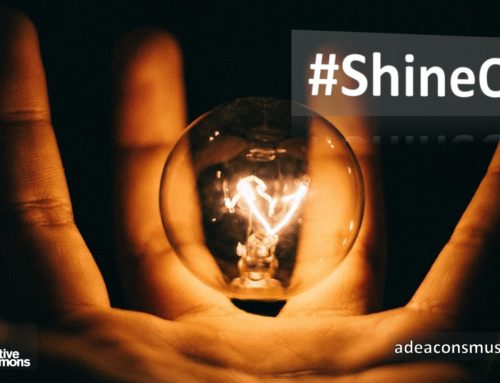Vignette: Love the Sinner, Hate the Sin . . .
As with all stories,
this may not have actually happened,
but all stories are true.
And as story-tellers know,
once you hear them,
they are happening to you. . .
The finality of it sits there. As with its kin, whether long barrelled or short, it is dressed in impassive, cold hard lines. On the nightstand, amidst journals filled with lament, doubt, questions and anger, it simply is. As thoughts of self-harm, soul-drenched fatigue and suicide set the stage, the gun’s weighted presence acts as a silent witness to a choice that dances upon a precipice from which there is no return.
As an observer with only one possible voice, it finds itself in a non-descript room, in a bland suburb, somewhere in a place where the Bible defines sin and sinner. A Holy Book used to create the boundaries and binaries of what it means to be gendered (male and female), what it means to love (heterosexual), and who is in (the pure) and who is out (the unclean). An interpretation of Sacred Scripture that offers an illusion of stability in a world gone mad.
In this place that could be in any house (mine or yours) in a city or town, village or suburb, the story is the same in generality, even though its particularity will never exist anywhere, any-when, ever again. In this place in which the imagination adorns walls with posters depicting bands, movies, or even heroines or heroes, all is dressed in monotone grey. This drab shadowed cacophony speaks to a deep, unspoken current of human struggle and tears that never fall, yet long to be shed.
Dressed in a deadened grey that speaks to the resilience of nylon polymer, it simply waits to be held, to be used in the utility for which it had been designed. From its handle grip, shaped to caress and hold fingers that perspire fear to the magazine that firmly and protectively houses shells intended to sever the dance of life’s sanctity, its form moves from hammer to muzzle. From the confidence of its two-trigger system, it seizes and prepares to discharge an intimately impersonal projectile in whatever direction its handler intends. As with all tools, it reflects the designer’s choice. As with all tools, it is, in and of itself, simply an inanimate object that possesses neither ill nor favour, intention or attention. To paraphrase just one obscure pop-culture prophet:
These impersonal, even metaphysical, questions and queries, however, have no place in this story. This is not an abstract moment, intended for poets or artists, painters or storytellers. This is the culminating moment in a lifetime, albeit composed of just sixteen solar revolutions, in which that which defines the person feels “wrong.” All the while, a silent witness observes this moment.
In particular, the human actor, whom we might call Alex in this moment, has never been drawn to, attracted to, or even loved whom one is supposed to. Instead, its heart has always been open and bloomed when near those who are like it, not opposite. And in this lifetime, in this generically unusual, specifically unrepeatable journey, a heart that opens in that context is defined not only as bad, but sinful, broken, even damned by evil’s taint.
No amount of remediation, retraining, inoculation, camp, or therapy reversed, healed or cured, can, would, or will help Alex. Each attempt Alex whole-heartedly embraced, trying to reverse what felt right, yet was clearly defined as wrong. With each remission, reversal and failure, this actor’s despondency, depression, and darkness simply widened, grew and rooted.
Such was, is, but may not be, the lament that filled Alex’s journals already mentioned. Such was, is, but may not be, the recriminations that barraged parents and teachers, pastors and therapists, during endeavours to purge sin. Yet always and inevitably, no answers arose in a field planted with only right and wrong. As wrong simply kept taking over the garden, like a weed strangling that which was right, choices became fewer. And now the actor and the object, the person and the thing, are familially held as time stops, as the tick pauses between what is and what might be, between now and then: life and death . . .
How does one resolve these tensions when all appears either/or? How does one realise, awaken, or embrace a different choice, when none seems possible? What does one do when this and that cannot be reconciled because they cannot coexist? What do we do, when that which we teach, value, and preference leads to one inevitable conclusion for some and simply does not compute for others?
Some moments and stories resolve themselves. In some tales and narratives, conflict and tension lead to insight and newness. Sometimes, creativity is born out of paradox. Sometimes
. . . In this grey ambiguity held like a vice in binaries, however, that may not be possible. In this nondescript context, in which breath is paused, resolution may only be found in a handgrip held in a manner not intended by its designer. In this imagined bedroom, the silent witness may find itself pressed intimately against the soft underside of a jawline that traces a fearful swallow of a person possibly named Alex. In this moment, in which the clock does not tick, in which the breath is not exhaled, in which the trigger has not been pressed, that which follows may find our witness finally speaking with its only voice exclaimed with a retort . .








Your reflections are most welcome!